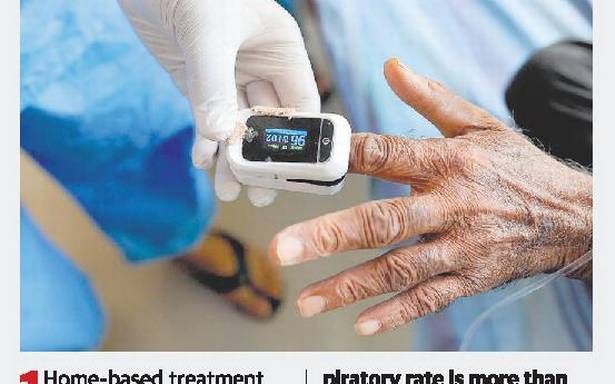Over a year into the pandemic, several doubts linger in the minds of people
What are the dos and don’ts for home isolation? Do all patients need to undergo a CT scan? When should steroids be prescribed for COVID-19 patients? What are the red flag signs? More than a year into the pandemic, several doubts and questions linger in the minds of people. Experts draw up a list of dos and don’ts for home isolation, screening and treatment protocols.
“Persons in home isolation require a separate room to stay in, a person to take care of them and monitor their oxygen saturation levels. All they need is paracetamol and vitamins. Depending on the age, some may need extra blood tests to monitor their condition. No routine CT scan is needed,” says V. Ramasubramanian, senior consultant, Infectious Diseases, Apollo Hospitals.
The majority of patients can be treated at home, notes K. Kolandaswamy, former Director of Public Health and Preventive Medicine. “If a person does not have high grade fever or cough and the oxygen saturation level is good, he/she can be isolated at home. Doctors’ standard prescription includes paracetamol and multivitamins. Do not self-medicate,” he says.
There are concerns over indiscriminate use of CT scans. Not all patients require a CT scan, say doctors. “CT scans are required when there are discrepancies in the clinical picture and history. If a person says he/she developed a fever the day before, and has developed breathlessness today, I will prescribe a CT scan. A CT scan is required if a person develops sudden breathlessness or has persistent symptoms for 10 days or if he/she is worsening clinically,” Dr. Ramasubramanian points out.
Another area of concern is the use of drugs. He notes that there is no role for antibiotics in COVID-19 treatment. “Steroids should be prescribed for patients with low oxygen saturation levels — less than 95%. Theoretically, using steroids early could worsen the infection. They may be less efficacious in the later part of the illness if used early.”
So what are the danger signs? Dr. Kolandaswamy says, “One of the signs is an oxygen saturation level below 95%. If the level dips after a six-minute walk test, approach a peripheral institution and stay under observation. A person with an oxygen saturation level of less than 90%, a significant lung involvement and co-morbidities should be taken to a higher treatment facility.”
Source: Read Full Article

